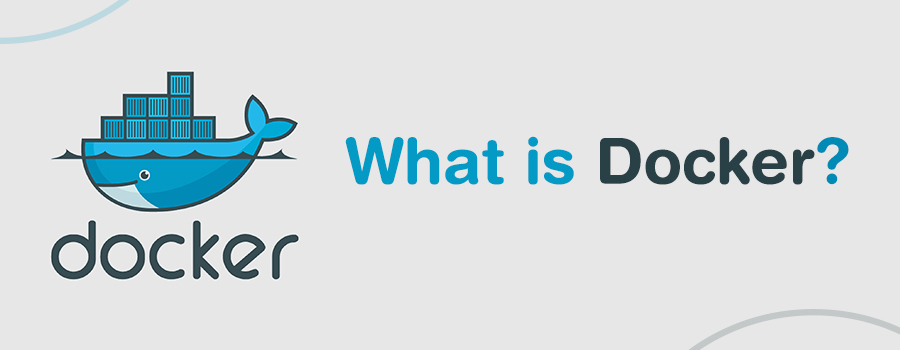
Vue 3 Beta 1 Version: Know The Key Features & Benefits
10th September 2020
How to Develop Apps for Foldable Devices?
15th September 2020Docker is capable of building and running our application in tiny lightweight containers.
All the libraries that are used by the application are compacted in tiny containers and then they become OS independent.
Dockers are considered as the options against VM and often have advantages over VM.
Released on March 20, 2013, it has seen a tremendous increase in popularity and usage in a short duration.
All the big cloud providers now back it up such as AWS, Azure, and GCP which now provide support to docker on their respective platforms and many customer-centric
products are running on these cloud providers where the customer application facing a lot of traffic is running on these dockers.
Dockerhub has a huge collection and is also the largest source of docker images. It contains more than 1.5 million docker images for free.
developers use containers for deploying their application on a machine having any Linux flavor, that is other than the parent machine of the application code.
What are Virtual Machines ?
Virtual machines use the resources of the host machine but are represented as a separate machine.
All Virtual machines have their OS.
Virtual machines use their separate OS and memory. The virtual machine uses the resources in isolation hence running many OS in parallel.
Using containers increases the outcome of the application and minimizes its size.
Virtual machines use a separate OS for itself, on top of the host OS, hence they are very heavy in size but containers use resources of host OS, hence light in weight.
3 virtual machines mean 3 different OS installed.
Docker containers lack security as compared to the virtual machines as all the containers share the same OS kernel, but virtual machines have a different OS kernel among themselves.
Docker containers are portable as they all use the same OS, but the virtual machines are not portable as they all use different operating systems.
History Before Containerisation
Monolithic Approach
Monolithic is the software development approach where all the interworking separate components were clubbed as one application and treated as one.
say for example we have an e-commerce website, which consists of different modules like user interface, product inventory, authorize user, authorize payments, and then delivery.
These modules are compacted and clubbed as a single application in a monolithic architecture.
In this architecture, the applications were considered as a single entity clubbing all its components as one. They usually consist of the client, server, and database. Hence all the requests are processed at a single place. The disadvantage of this approach was a common code base, and to make a component change means the whole application was supposed to be built again.
Advantages:
1. Less impacted components:
Due to its compact nature, components like logs and monitoring, if required were modified as a whole application and not as many distributed components, this made the life of developers easy to handle the changes as one component.
2. Ease of testing:
As monolithic applications are considered as a single entity hence it was easy to test them as compared to the microservice application.
3. Ease of deployment:
As monolithic applications are a single entity, hence any change made produced a single file or directory of the application and it was only needed to be deployed again and again.
4. Ease of Development:
As all developers work on a common code base, it is easy to develop applications using a monolithic approach.
Microservice Architecture
In contrast to the monolithic approach where the application is a single entity, in microservices, the application is broken down into multiple modules. Here each module serves a separate purpose and has its separate database.
1. Individual components:
As stated above, all modules in the application are individual components, which makes development an easy process and easy to troubleshoot in case a bug arrives, as only the faulty module is rechecked.
2. New Features:
As the code is broken down in small modules, new features can be introduced at regular intervals.
3. Scalable:
In high traffic or better performance conditions, only the responsible component can be scaled up or down and no need to unnecessarily scale all the components as in the monolithic approach.
So I am sure, reading this docker tutorial until now must have given you some basic idea about the History Before containerization and how microservices have changed the way development was done.
So why to use containers?
Containers are small units that are used for running applications. They do not contain any OS and use the host OS.
1. Lightweight :
As we know that containers do not contain any OS and just have the required libraries and resources to run the application, they are light in weight and use the host OS.
2. Portable:
Containers and their contained applications can be deployed on any OS or hardware.
3. Efficient:
Applications are easily deployed and can be upgraded, reducing the time to market.
4. Easy development:
As the application is broken down as modules, each developer just needs to focus on its components and all such components can run in a container cluster to work as a complete application.
Dockerfile, Images & Containers
What is a Dockerfile?
Dockerfile is a text file that contains the set of instructions for the Docker.
Docker uses these instructions to build an image. Build command is used to create an image from this Dockerfile. These instructions are the set of commands that are run in order when a container is created from this image. Each line in a docker file is considered as a separate layer.
Example of a Dockerfile :
- FROM alpine
- WORKDIR /my work
- COPY . /mywork
- RUN apt-get -y update && apt-get install -y wget
- CMD echo hello
What is a Docker Image?
A set of commands or instructions that are executed to start a container is called an image.
It is a collection of files that have no state.
This is in a read-only format. An Image consists of a list of commands that are executed in sequence when a container is formed out of it. You can use docker images to install applications that run within a container and pass the commands to them even at run time.
What is a Docker Container?
Docker container is a package that contains the application code and libraries that are required to run the application. Containers also make the application environment independent. Docker images when executed are called Docker containers.
Docker Compose
Till now we have seen how to run a single container but, even multiple container applications can be run.
This can be done with the help of docker-compose.
It helps us to define and run multiple containers as a single service.
It uses a YAML file for configuring the application. We then use this YAML file to start the application and all its services.
With the use of docker-compose, we can set up a complete environment to run our applications and also bring it down easily.
It separates the environment with the use of different project names.
Remember: When a container is brought down the data in it is lost. To avoid this situation user-specific volumes are the best solution.
Docker Swarm
Hosts that contains many masters and worker nodes is called a docker swarm. Here master node is responsible for managing the worker nodes.
In case a worker node goes down all tasks performed by it are transferred to another healthy node. This group of hosts is called a cluster.
Benefits :
1. Management of Cluster:
Master and many worker clusters are handled by docker swarm.
2. Scalable:
Scaling up and down of tasks are done easily.
3. Load-balancing:
In Swarm, manager ingress exposes services to the outer world.
Services are assigned a port number, using which it can be accessed from the outside world.
An internal DNS is responsible for assigning the services an entry.





